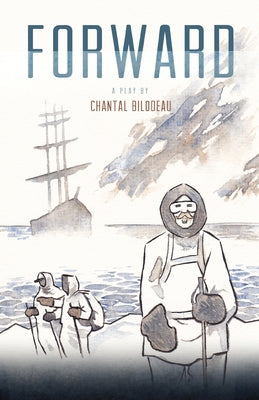Description
Forward was partly inspired by a ten-day sailing expedition around the Svalbard Archipelago, located halfway between Norway and the North Pole. Spanning a hundred years and thousands of kilometres from the sixtieth parallel North to the top of the world, Forward presents a poetic history of energy development in Norway from the initial passion that drove explorer Fridtjof Nansen to the North Pole, to the consequences of decades of our addiction to fossil fuels. A blend of theatre and electropop music, the play progresses backwards from 2013 to 1893, and zeroes in on close to forty characters whose day-to-day lives illustrate how the choices we make often have unintended consequences. Woven through this history is the passionate love affair between Nansen and sea ice, embodied as a character in the play. Expressing herself only through song, Ice, who has waited for millennia for the arrival of her lover, is bracing to meet her destiny. A relay race through time, where each generation passes the baton to the next, Forward takes a compassionate look at the legacies we leave behind, and at what we are willing to do for love.
Ultimately, Forward is about climate change. It's a story about how an Arctic explorer fell in love with Ice (embodied as a character in the play), and unwittingly opened up the Arctic for development. A story about people having good intentions that led to unintended consequences. A story about who we are in all our glorious imperfection. But Forward is also a story of hope. It is an invitation to collectively grieve for what we lost, for what we continue to lose every day, so that we can forgive ourselves. It is a reminder that if we come together as a community, we will find a solution.
Forward is the second play of the Arctic Cycle - a series of eight plays that examine the impact of climate change on the eight countries of the Arctic. The play takes its title from Nansen's ship Fram, which is the Norwegian word for "forward."
With a foreword by Una Chaudhuri, a professor at New York University who studies the geography of drama, and an introduction by Tael Naess, a Norwegian writer and playwright.
Author: Chantal Bilodeau
Publisher: Talonbooks
Published: 12/05/2017
Pages: 144
Binding Type: Paperback
Weight: 0.40lbs
Size: 8.40h x 5.50w x 0.50d
ISBN13: 9781772011838
ISBN10: 1772011835
BISAC Categories:
- Drama | Canadian
- Drama | American | General
About the Author
Chantal Bilodeau is a playwright, translator, and research artist whose work focuses on the intersection of science, policy, culture, and climate change. She serves as the artistic director of The Arctic Cycle - an organization created to support the writing of eight plays that look at the social and environmental changes taking place in the eight countries of the Arctic - and is the founder of the blog Artists and Climate Change. She was a co-organizer of Climate Change Theatre Action, which presented 100 events in 26 countries in support of the 2015 Paris Climate Conference. Her plays have been shown at theaters and universities in the United States, Canada, Mexico, Italy, and Norway. She was awarded the Woodward International Playwriting Prize, and First Prize in the Earth Matters on Stage Ecodrama Festival, and the Uprising National Playwriting Competition. She is the recipient of a Jerome Travel and Study Grant and a National Endowment for the Arts Fellowship, and has been in residence at Yaddo, MacDowell, the Banff Centre, and the National Theatre School of Canada.
Una Chaudhuri is a professor of English, drama, and environmental studies at New York University. She has been working on the "dramaturgy of climate change" through involvement with such works as Chantal Bilodeau's Arctic Cycle and Marina Zurkow's Dear Climate, among many other environmentally based theatre and performance projects. She is a strong spokesperson for theatre projects working against climate change. Tale Naess is a filmmaker, author, and playwright who has written poetry, screenplays, texts for dramatic installations, libretto to the opera, plays, and more. Her recent work focuses on polyvocality, and her introduction will provide some perspective about how the play fits in the Norwegian context.
